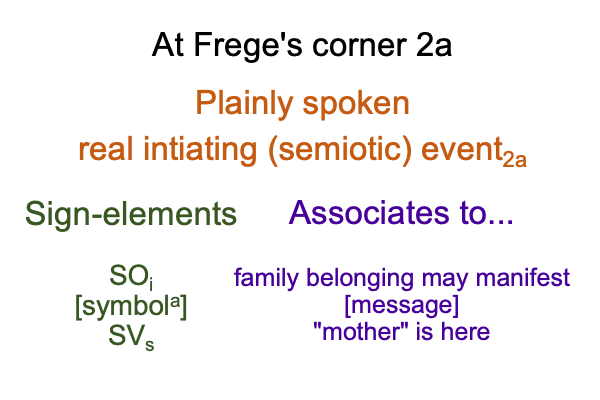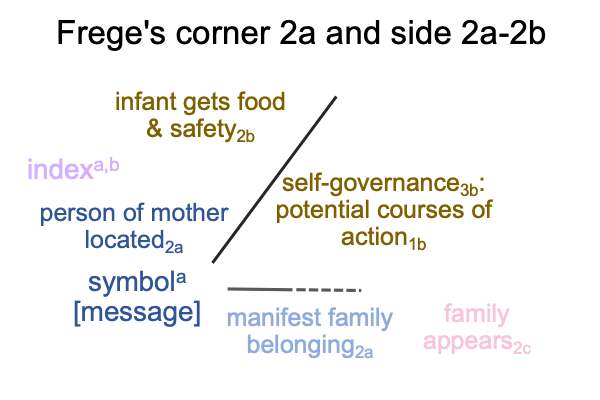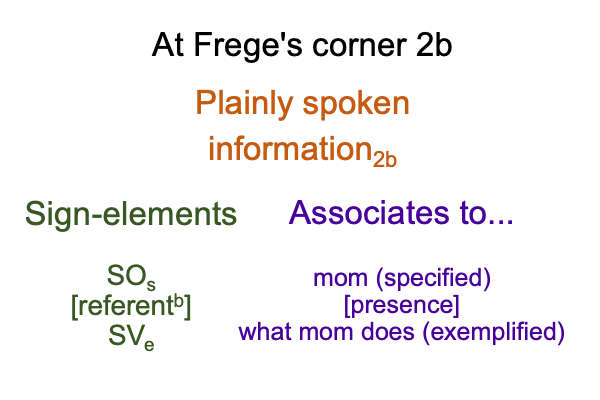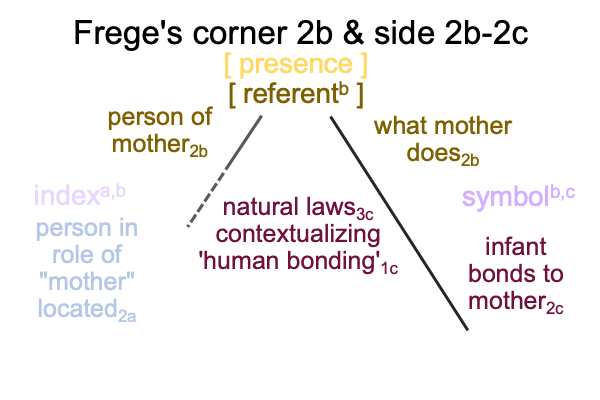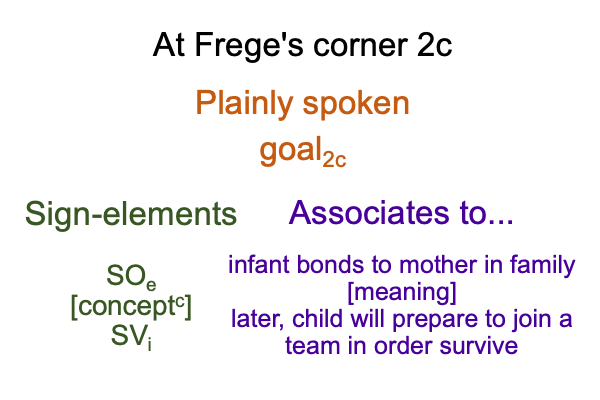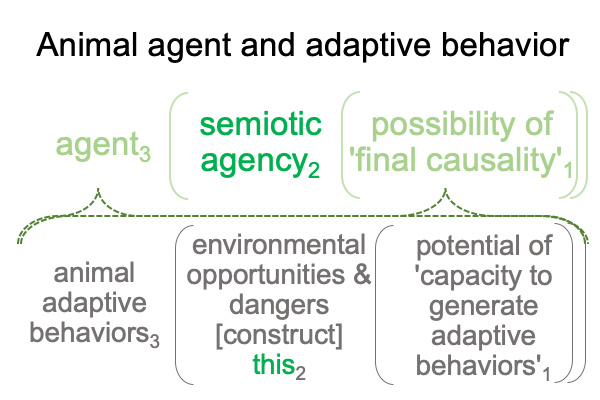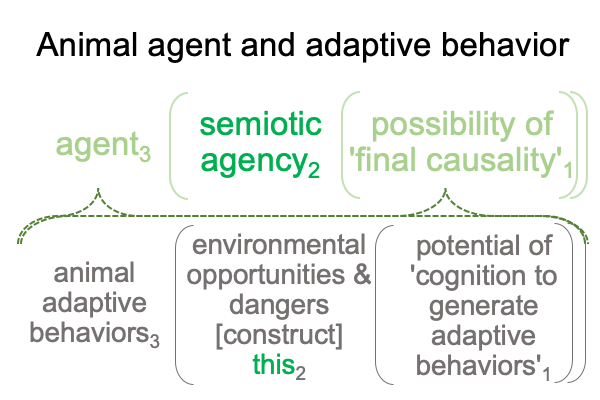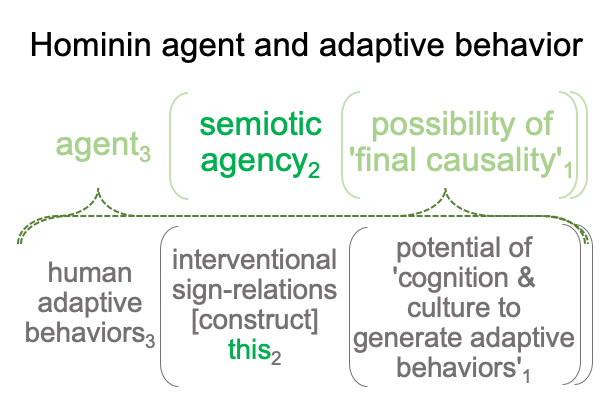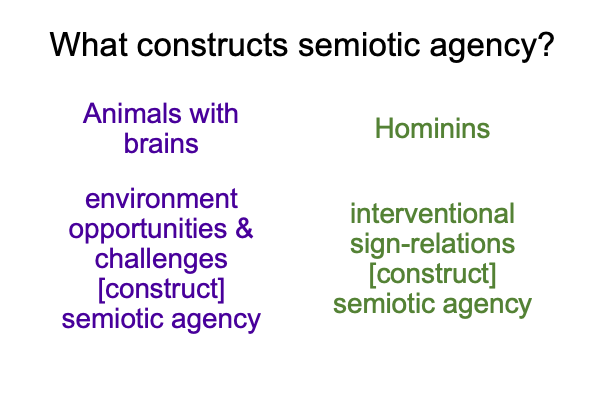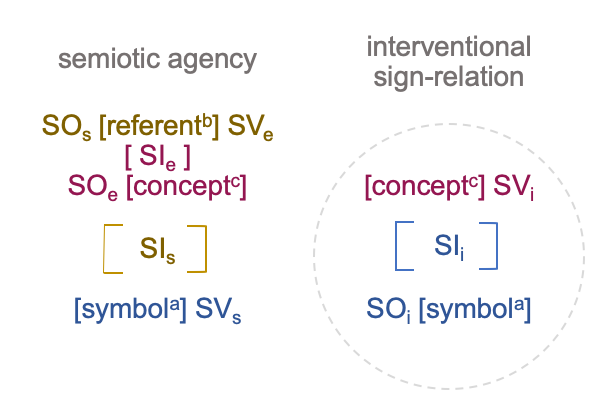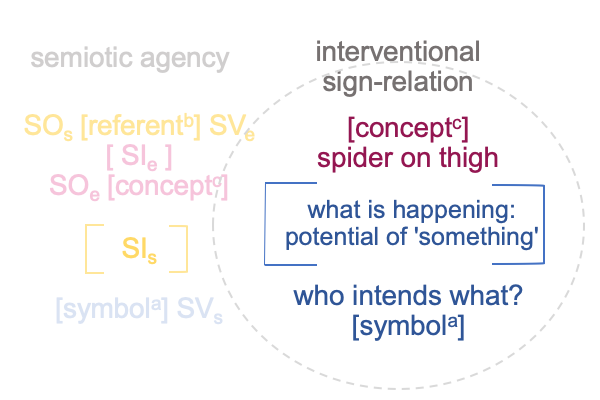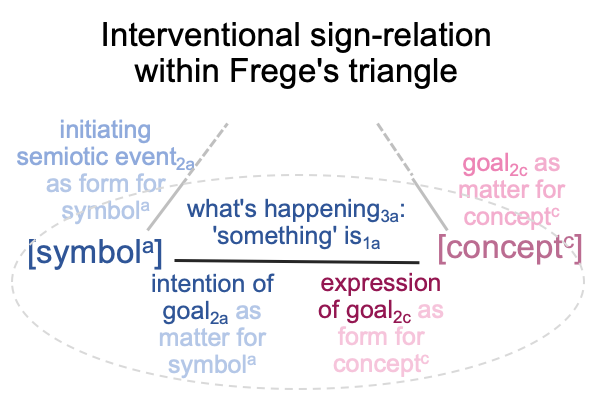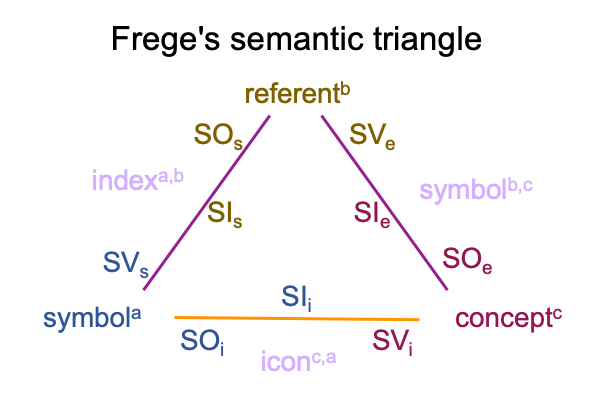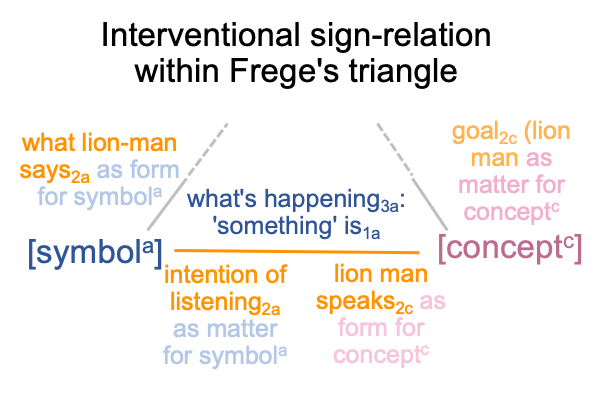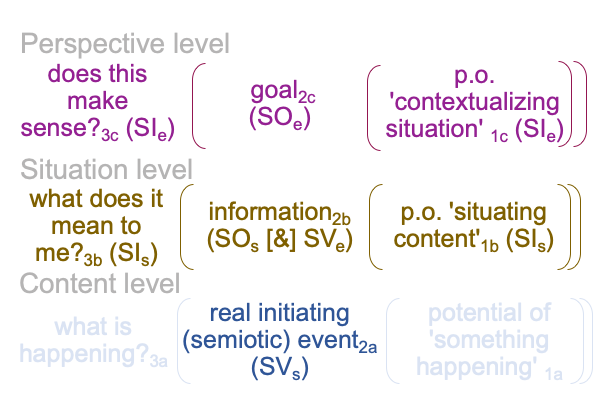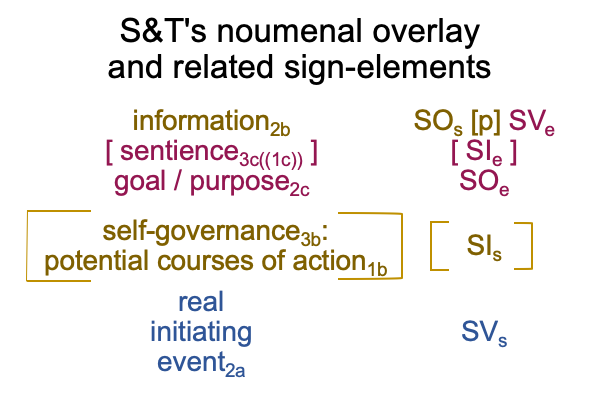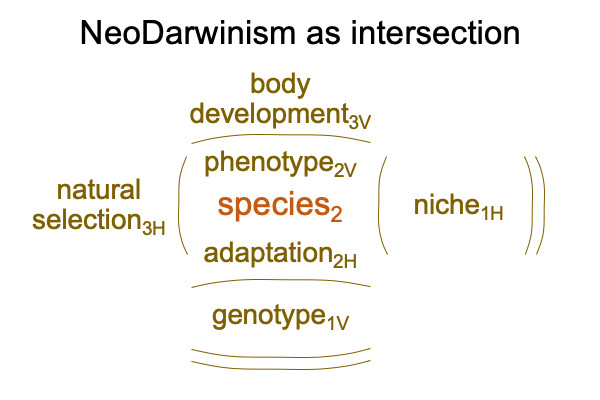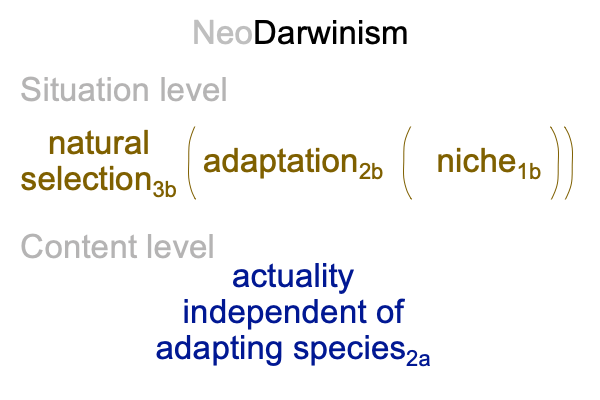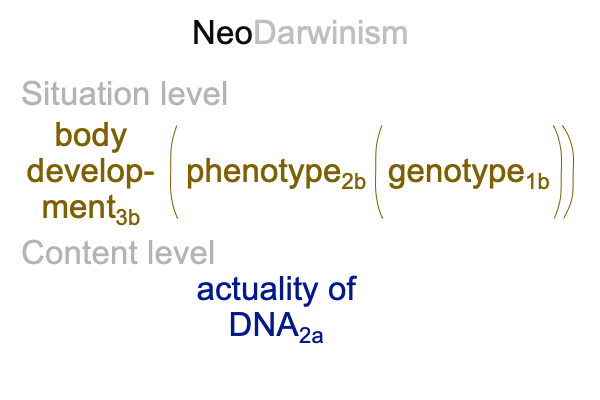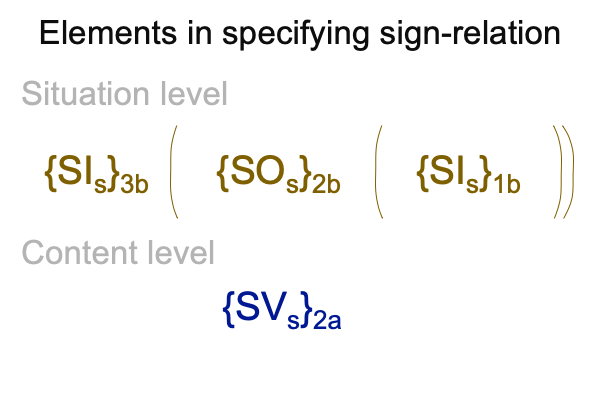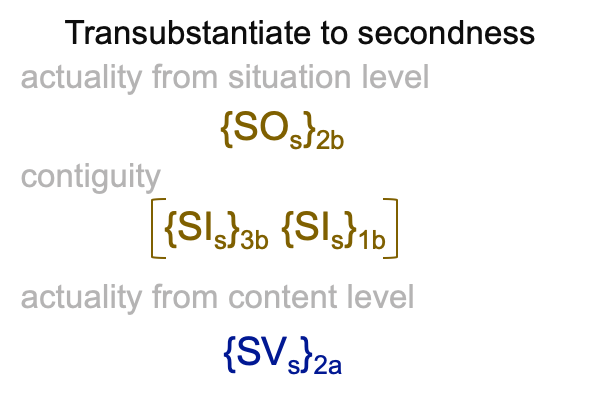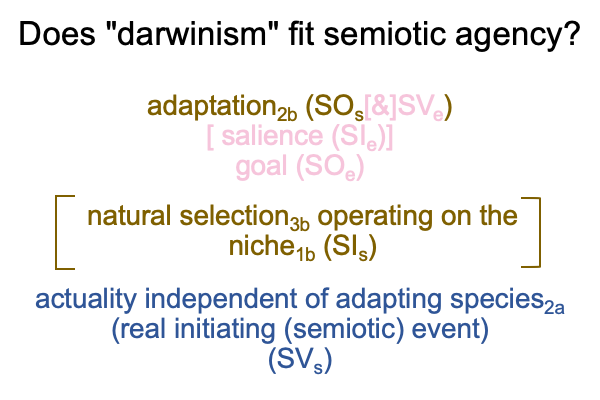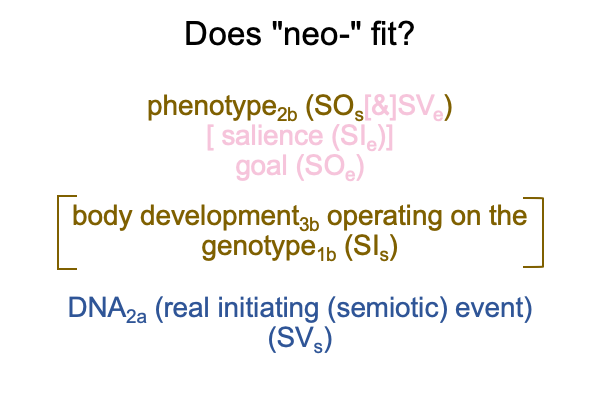Looking at Lorenzo Magnani’s Chapter (2024) “Anchors of Meaning” (Part 1 of 7)
1147 The text before me is chapter eighteen of Pathways (see point 831 for book details, pages 379-400). The full chapter title is “Anchors of Meaning: The Intertwining of Signs, Abduction and Cognitive Niches”. This chapter opens Part IV of Pathways. The title of Part IV is “Meanings in Humans and Beyond”.
1148 The author belongs to the Philosophy Section of the Department of Humanities at the University of Pavia, Italy. He has a scientific affiliation as well, being a member of the Computational Philosophical Laboratory.
1149 The abstract tells a story that mirrors this examination (so far). Biosemiotics is not only semiotic agency. Biosemiotics encompasses semiotic agency and the interventional sign relation. The two are bridged through the contiguities of [conceptc] and [symbola].
Human brains thrive on semiosis. The brain generates a series of signs (specifying and exemplar) that latch onto an apparently external sign-relation (interventional) with the two contiguities of [conceptc] and [symbola].
1150 Or, should I use the word, “anchors”?
Here is the picture of the [conceptc] and the [symbola] as corners that anchor Frege’s triangle.
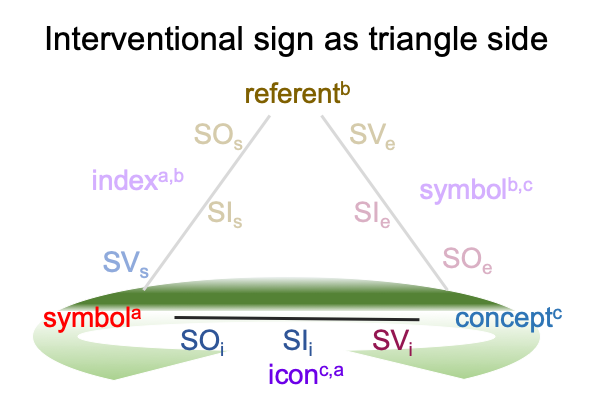
[Conceptc] is the contiguity within the perspective-level actuality2c of a goal2c.
A banner wraps around the interventional sign-relation.
[Symbola] is the contiguity within the content-level actuality2a of a real initiating (semiotic) event2a.
1151 In section 18.1 (“Humans as Ecological Engineers and Chance Selectors”), the real initiating (semiotic) event2aencompasses innately anticipated systems of differences. For, example, the infant expects to interact with persons. Each person has his or her own face. It’s like a system of differences (Saussure’s view) or a symbolic order (Peirce’s approach).
The family is one of the smallest social circles of the Lebenswelt that we evolved in. Since roles are re-enacted generation after generation within this social circle, one might think that the each person2a images an appropriate role2c. This happens at first…
…and one sees it when an infant gets separated from its mother.
That tyke is not taking any chances.
1152 The child is born with innate expectations of the smallest social circle (SOe) [and that means] family (SVi).
Does this look like Frege’s corner 2c?
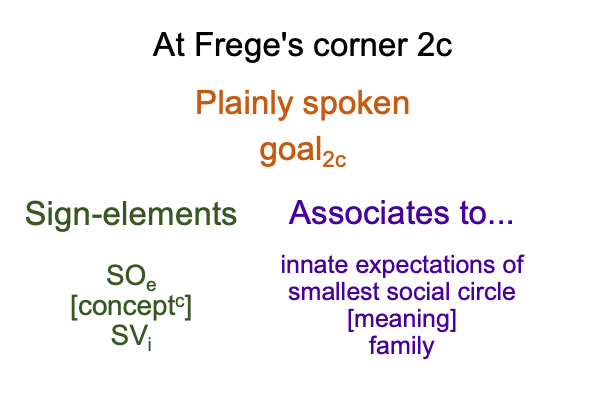
1153 If so, then the interventional sign-relation, which stands outside every agent in the family, yet is the reality in which each agent participates, follows.
Family members2c (SVi) stand for their particular social roles2a (SOi) in regards to (a normal context like) what is happening3a operating on (a possibility like) the potential of ‘something’ happening1a (SIi).
1154 Here is a diagram of the interventional sign-relation for a newborn.
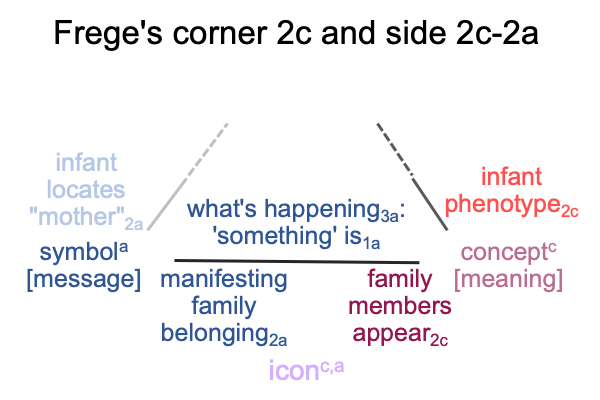
1155 Is this cultural-niche construction?
If so, then who or what is constructing this niche? Or does the niche construct itself because it exploits an opportunitythat arises from the independent actuality of sign-relations? Just like a bat exploits acoustics to echo-locate, humans exploit sign-relations to abduct who mommy must be.
Sign-relations are immaterial beings that entangle the material. The materiality of the family members2c (SVi) signify the manifestation of ‘home’2a (the immaterial manifestation of family belonging, SOi) in regards to the normal context of the birth of an infant3a operating on the potential of ‘a successful birth’1a (SIi).

